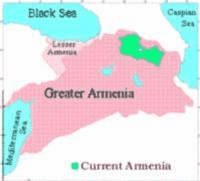
|
|
Tell a friend Bookmark Us Contact Us
Lady from Davrej (Tabriz area), 18th Century.
Source: Painting by
Sargis Khachatryan,
Historical Museum of Yerevan.

Tavriz, a large city in the Northeastern Iran. It is the second largest city after Tehran.
History indicates that in the 9th Century Seljuk conquerors forcefully deported thousands of Armenians to Iran.
Marco Polo (1271), Gonzalez (1403), Kantarini (1474) and others have attested that in 13th-15th
Centuries there was a large and wealthy Armenian community in Tavriz. According to manuscripts
dating back to 1670 early Armenian schools were first located in churches. The first Armenian
printing house was founded in 1889, and the first Armenian newspaper was published in 1903,
subsequently there were more than 30 media publications. The first Armenian theater was founded in 1879.
Later the population of Tavriz decreased due to various wars and forceful deportations, and in 1829-1830
a large number of Armenians moved from Tavriz to Eastern Armenia, which was, then under Russian control.
By 1830 there were only 40 Armenian families left in Tavriz. At the end of the 19th Century and the
beginning of the 20th Century the Iranian government, for economic and political reasons allowed some
autonomy to the Armenian population of Iran. As a consequence the population of Tavriz increased and the
number of Armenians reached 5500. The renown historian Araqel Davrijheci was a native of Tavriz. In 1946
a large number of Armenians moved to Armenia, which was then one of the Republics of the Soviet Union.
Notwithstanding this, Tavriz continues to be a major Armenian cultural center.
HISTORY